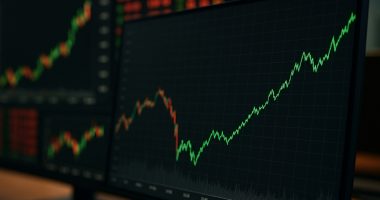- Chris Kerlow, CFA and senior portfolio manager at Canaccord Genuity Wealth, shares his expertise about battery metals investments
- Canada recently blocked three Chinese companies from investing in Canadian miners to decrease dependence on outside countries
- The International Energy Agency estimates a doubling of renewable energy capacity by 2030 and another 300 per cent increase by 2050 to try to meet our net zero emission goals
- Canada is home to 100 publicly listed mining and material exploration companies, with a combined market cap of more than $500 billion
As The Market Herald Canada continues to follow and bring you the latest on battery metals investing in Canada, we sat down with Chris Kerlow, CFA and senior portfolio manager at Canaccord Genuity Wealth.
Kerlow dives into battery investment strategy, Canada’s decreasing dependance on outside countries in the battery metals space, the growing EV market and its effect on battery metals demand.
TMH: Are battery metals an investment priority for you in 2023 and 2024?
Kerlow: They’re part of a bigger theme for us, which is the energy transition theme. The International Energy Agency thinks that we’ll have about a doubling of renewable energy capacity by 2030 and another 300 per cent increase by 2050 to try to meet our net zero emission goals.
And batteries play a big part of that, EV adoption is probably the driving force behind all of that. But then there also needs to be the charging infrastructure around it to make it a working usable network.
The clean energy generation surrounding that zero emission economy is going to again, take tonnes of copper, which is one of our top ideas surrounding this energy transition theme. And then again, lithium and rare earth metals all play a big part in that.
TMH: Canada has two lithium mines, one is the Tanco coal mine, 160 kilometres northeast of Winnipeg. It is owned by a Chinese company, which doesn’t fit Canada’s strategy of lessening dependance outside of our own country. How do we get this situation in line with Canada’s new critical minerals strategy?
Kerlow: The Canadian provincial and federal governments are starting to make strategic investments into these projects to help access. A lack of infrastructure limits access to a lot of these resource rich areas. Further investment in transportation, energy infrastructure will be required to unlock the potential of these remote battery mineral deposits.
You know, we have a large hard rock lithium deposit in the Quebec area that really just doesn’t have the infrastructure necessary to make it completely economical in a lot of those areas.
Canada did recently block three Chinese companies from investing in Canadian miners, so they are making moves in that space. But lithium production needs to triple or quadruple by about 2 million tons by 2032 to meet our growing demand. So I think that demand is really going to help.
TMH: Do you have an investment strategy for battery metals?
Kerlow: So, we like companies up and down the vertical meeting, those that are, you know, have strong niches in the extraction.
Lithium is a space that we’re investing in right now. We’ve also been looking at investments in cobalt and manganese as well on the downstream. But then the technology that’s making this all possible from everything from battery manufacturing to battery technology is another part of the ecosystem that we think is necessary to meet these goals and is something that a lot of government support and capital is getting behind.
TMH: And considering the current battery metals supply chain. What is the most critical challenge hindering industry growth?
Kerlow: I’d say it’s probably the dependance on a few suppliers. You look at the world’s cobalt and lithium production, notably coming from the Democratic Republic of Congo, for cobalt and a few countries like Australia, Argentina, Chile and China for lithium. This creates supply chain vulnerabilities as disruptions in these regions can impact the availability of the price that increases geopolitical risk.
As tensions around these countries intensify, by like we’ve seen for decades on the oil front, we’re starting to see that now. And then you have ethical and environmental concerns from working in those particular jurisdictions. All of that couples into price volatility.
TMH: And given the size and the importance of the EV market. Do current market caps for battery metals and mining stocks reflect that size?
Kerlow: Most mining companies aren’t particularly bad battery metal companies specifically, but they focus on particular battery metals. And fortunately here in Canada, we are home to about 100 publicly listed mining and material exploration companies, with a combined market cap of over $500 billion. So the opportunity to invest in specific niches of the battery metal ecosystem is widely available here in Canada. Electric vehicles are forecasted to be about half of global light vehicle sales by 2030.
So, automotive manufacturers are already looking to collaborate to kind of offset some of that supply chain risk. Mining companies also need to be focused on being agile for the future as technological innovation in mining techniques and the battery metals necessary to produce those batteries continues to change.
And overall, the supply and demand dynamics present a super trend here, something that we’re looking deeply at and have a lot of exposure to in both the private and public market space.
TMH: And just to talk about the agility, what kind of things do you mean when you say they need to have some “agility”?
Kerlow: Mining techniques continue to evolve. Areas that were accessible before are now becoming accessible. Recycling technologies and coupling, you know, even water usage and innovation into the mining techniques continues to need to advance as we see these technologies evolve in different parts of the world and make previously uneconomical reserves now economical.
Also, the pressure on sustainability and working around government regulation is another reason why these companies need to be agile.
Canada is home to about 100 publicly listed mining and mineral exploration companies, with a combined market cap of over $500 billion. For more from this interview and a deeper dive on battery metals, with some guidance on where the best opportunities can be found, check out the Market Herald Canada’s Electrifying Opportunities Thematica report.
Also check out our other battery metal interviews with Chris Kerlow, The case for copper and nickel and What it will take for Canada to get to net zero by 2050.
Join the discussion: Find out what everybody’s saying about public companies and hot topics about stocks at Stockhouse’s stock forums and message boards.
The material provided in this article is for information only and should not be treated as investment advice. For full disclaimer information, please click here.



